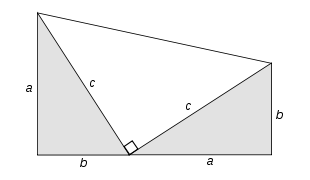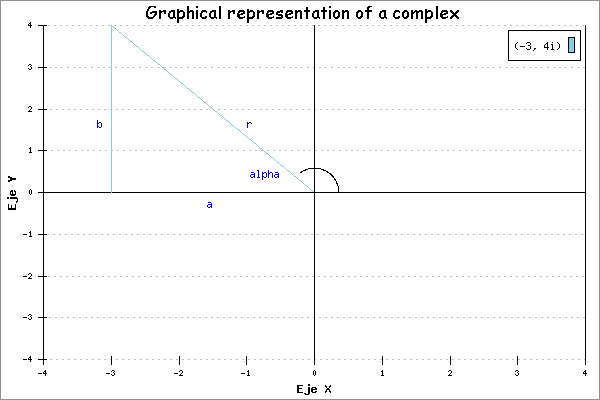Inequalities
Below you are going to list some inequalities that are useful or that have not been mentioned
Up to now we have shown some properties that are verified in the various sets of numbers
Considering that each numerical set we have defined above contains the previous one and the set of real ones contains them all, all of them (except the principle of good sorting of natural numbers) are checked for the actual numbers
For example, using some of the inequalities mentioned above, it is possible to prove that:
- 0\leq a \leq b \Rightarrow a^2 \leq b^2
- 0 < a \leq b \Rightarrow \frac{1}{b} \leq \frac{1}{a}
Absolute value of a real number
It is defined for a real number in the same way that it has already been made for integers, but it also meets some inequalities that deserve to be pointed out
- -\|a\| \leq a \leq \|a\|
- \|a\| \leq b \Leftrightarrow -b \leq a \leq b
- \|a\| \geq b \Leftrightarrow \begin{cases} a \geq b \\ a \leq -b \end{cases}
- \|a\cdot b\| = \|a\|\cdot \|b\|
- a^2 \leq b^2 = \|a\| \leq \|b\|
Keep in mind that in the equality \sqrt{a^2}=\|a\|, will only be true \sqrt{a^2}=a if a \geq 0
Distance
Dice a, b \in \mathbb{R}, is called distance between a and b to the actual non negative number \|a-b\|
This notation is fundamental to interpret inequalities of the form \|x-a\| \leq b, such as the distance of x to a is less than or equal to b
Triangular inequality
We've seen it before, but because it's an important inequality we remember it for real numbers
Dice a, b \in \mathbb{R} is true that \|a+b\| \leq \|a\|+\|b\|
Demonstration: triangular inequality
We take \begin{cases} -\|a\|\leq a \leq \|a\| \\ -\|b\|\leq b \leq \|b\| \end{cases}
We add both inequalities and we obtain -(\|a\|+\|b\|) \leq a+b \leq \|a\|+\|b\|
And therefore \|a+b\| \leq \|a\|+\|b\|
Inequality triangular reverse
Dice a, b \in \mathbb{R} is true that \|a\|-\|b\| \leq \|a-b\|
Demonstration: reverse triangular inequality
The inequality triangular inverse is equivalent to prove that -(a-b) \leq \|a\|-\|b\| \leq \|a-b\|
By the inequality triangle has to
\|a\|=\|a-b+b\| \leq \|a-b\|+\|b\|
\|a\|-\|b\| \leq \|a-b\|
with what the right-hand side of the inequality is proved
By the inequality triangle has to
\|b\|=\|b-a+a\| \leq \|b-a\|+\|a\|
\|b\|-\|a\| \leq \|b-a\|
-(a-b) \leq \|a\|-\|b\|
with what the left-hand side of the inequality is proved
Inequality between arithmetic and geometric mean
One of the most useful and popular inequalities is the inequality between the arithmetic and geometric mean (sometimes referred to as AM – GM). Which is defined as follows:
Dice a_1, a_2, \cdots, a_n \in \mathbb{R^+}
We define the arithmetic mean as M_{n, 1}=\frac{a_1, a_2, \cdots, a_n}{n}
It defines the average geomética as M_{n, 0}=\sqrt[n]{a_1, a_2, \cdots, a_n}
And inequality is defined as M_{n , 0} \leq M_{n, 1}
Demonstration: inequality between arithmetic and geometric mean
This demonstration was published in the magazine Mathematical Intelligencer in 2007, vol. 29, number 4 by M. D. Hirschhorn. It is simple to understand and is based on an induction on n
If n=1 then M_{1, 0}=M_{1, 1}
Suppose that it is true for n
Let's use the following observation, seemingly unrelated, to achieve the objective pursued:
x^{n+1}-(n+1)\cdot x + n \geq 0\text{, if }x > 0
The demonstration of this fact is evident by using the identity
x^{n+1}-(n+1)\cdot x +n=(x-1)^2\cdot(x^{n-1}+2\cdot x^{n-2}+\cdots +(n-1)\cdot x+ n)
It can also be tested by induction. If n=1 is inferred from the identity x^2-2\cdot x+1=(x-1)^2
Suppose that it is true for n
(x-1)^2\cdot (x^n+2\cdot x^{n-1}+\cdots + n\cdot x + n +1)=
=(x-1)^2\cdot [x\cdot (x^{n-1}+2\cdot x^{n-2}+\cdots + (n-1)\cdot x + n) + n +1]=
=x\cdot [(x-1)^2\cdot (x^{n-1}+2\cdot x^{n-2}+\cdots + (n-1)\cdot x + n)] + (x-1)^2\cdot (n +1)=
=x\cdot (x^{n+1}-(n+1)\cdot x + n) + (x^2-2\cdot x + 1)\cdot (n +1)=
=x^{n+2}-(n+2)\cdot x + n+1
Now we take \begin{cases}a=\frac{a_1+a_2+\cdots+a_n+a_{n+1}}{n+1} \\ b=\frac{a_1+a_2+\cdots+a_n}{n}\end{cases}, using in the chosen identity x=\frac{a}{b} we will have to \begin{cases}(\frac{a}{b})^{n+1}-(n+1)\cdot\frac{a}{b}+n\geq 0 \\ a^{n+1}\geq ((n+1)\cdot a - n \cdot b)\cdot b^n \end{cases}
Which can be rewritten as
\begin{cases}(\frac{a_1+a_2+\cdots+a_n+a_{n+1}}{n+1})^{n+1}\geq a_{n+1}\cdot (\frac{a_1+a_2+\cdots +a_n}{n})^n \\ (M_{n+1, 1})^{n+1} \geq a_{n+1}\cdot (M_{n,1})^n \end{cases}
since M_{n,0}\geq M_{n,1}
you have to (M_{n+1,1})^{n+1})\leq a_{n+1}\cdot (M_{n,0})^n=a_{n+1}\cdot a_n \cdots a_1
that is equivalent to M_{n+1, 0} \leq M_{n+1,1}
So at the end of the demonstration met the argument of induction
Notes
It is interesting to observe that the equality M_{n,0}=M_{n,1} is true only if and only if a_1=a_2=\cdots=a_n. This fact follows in view of the fact that equality x^{n+1}-(n+1)\cdot x+n=0, for x > 0, is only true if x=1 and has been chosen as the argument of induction suitable
The arithmetic mean and the geometric mean are only two particular cases of a much wider class of means. \forall s \in \mathbb{R}, the mean order s of the positive actual values is defined
a_1,a_2,\cdots,a_n\text{ as }M_{n,s}=(\frac{a_{n}^{s}+\cdots+a_{1}^{s}}{n})^\frac{1}{s}\text{, }s\not=0
M_{n,0} as has already been done. Limit cases can also be considered \begin{cases}M_{n, -\infty}=min\{a_1,a_2\cdots,a_n\} \\ M_{n, +\infty}=max\{a_1,a_2\cdots,a_n\} \end{cases}
Inequality between arithmetic and geometric mean is, in turn, a particular case of a more general chain of inequalities: M_{n, s} \leq M_{n, r}\text{, if }s < r
The average M_{n, -1} is called the harmonic mean and can be inferred from elementary inequality M_{n, 0}\leq M_{n,1} that M_{n, -1}\leq M_{n,0}


